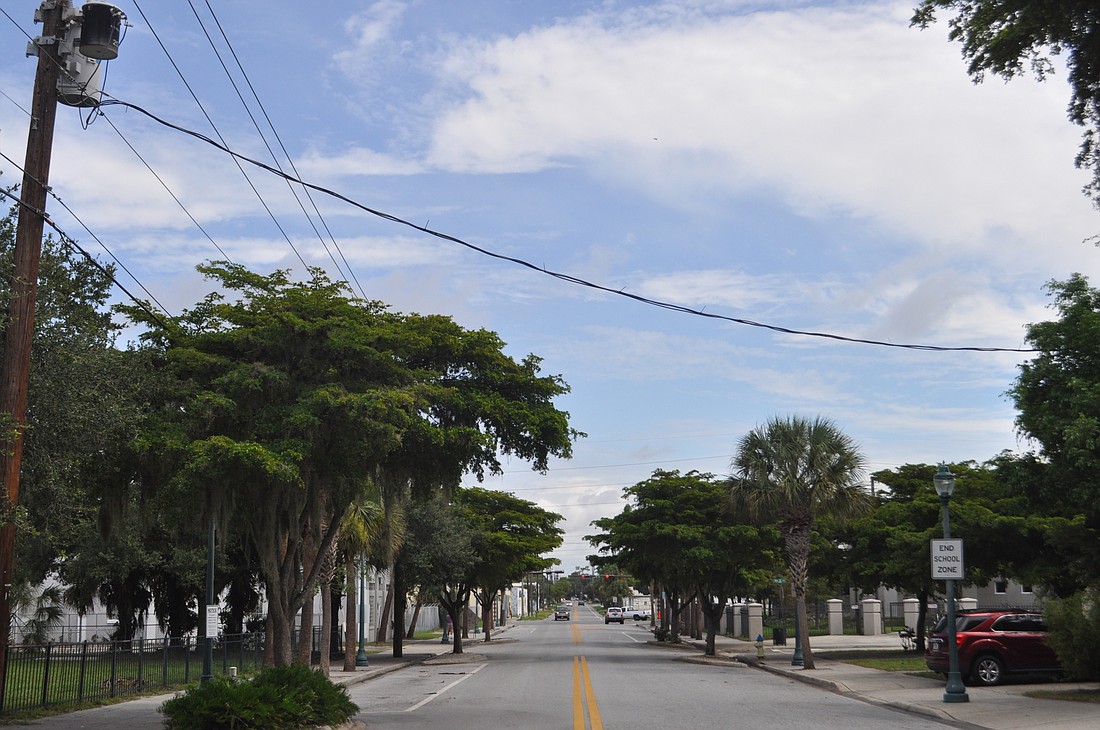- April 24, 2024
-
-
Loading

Loading

The scene at Central Avenue and Ninth Street, the corner at which the Salvation Army’s Rosemary District facility sits, has become ingrained in the minds of many city residents — particularly those who live and work in the neighborhood in which the service provider operates.
Drug dealers operate within a large gathering of homeless individuals, most of whom have amassed a considerable amount of personal belongings that sit on the sidewalks. It’s a problem that has plagued the area for years, one that seemed destined to remain despite pleas from frustrated residents and businesses.
And then, seemingly out of the blue one day, they were gone — the picture wiped clean.
The sidewalks near the Salvation Army were actually clear about a month ago, but Ethan Frizzell and other staff members didn’t want to celebrate too early. It was the result of at least nine months of work, a collaboration between Salvation Army employees, city staff and the Sarasota Police Department.
Today, Frizzell — the major in charge of the Salvation Army’s Sarasota operation — is ready to call that effort a success, and hopes to see similar efforts implemented throughout the city.
How it happened
That’s not to say the problem has been solved, per se. Not all of the individuals who regularly found themselves on Central Avenue sidewalks are getting treatment or, if they were breaking the law, in police custody. Some have merely moved elsewhere, just a few blocks away, to continue the same behavioral patterns.
But Frizzell believes significant progress has been made thanks largely to progress on three different fronts:
The first approach allowed for targeted, varied solutions to get individuals off the street. The last two approaches, coupled with a new city ordinance banning the storage of unattended private property on public land, made it more challenging for the homeless population to accept the status quo on Central Avenue.
By directly interacting with the hard-to-serve on a case-by-case basis, the Salvation Army was eventually able to ascertain their needs. Some individuals prioritized the well-being of their material goods over getting treatment, so the city helped provide storage options for those people within the service provider’s facilities. For others, staff felt a wake-up call was in order — so the Salvation Army paid for a weekend hotel stay, hammering home the benefit of a life off the street.
"If you can say, 'Look, there is food and housing available — however, you can't stay on the corner drinking all day,' then it gives them a different choice." — Ethan Frizzell
Frizzell admits the current state of Central might not be permanent, but it’s a good start that he thinks can be capitalized upon. By and large, a focus on reducing criminal behavior and on cutting down on enabling behavior — both of which typically come from housed individuals, rather than the homeless — will make addressing the needs of specific homeless people easier to accomplish.
“If someone is dropping off food twice a day, then a person now has a choice of: Do they want to get into housing, or do they stay on the street?” Frizzell said. “If you can remove that and say, ‘Look, there is food and housing available — however, you can't stay on the corner drinking all day,’ then it gives them a different choice.”
Future plan
Although the current state of Central Avenue might be a welcome sight, the future state of the Salvation Army is a point of concern for many in the area.
At a July meeting of the Rosemary District Neighborhood Association, residents and other stakeholders vented a mounting frustration with the homelessness problem. In particular, the Resurrection House on Kumquat Court was pointed to as a contributor to the area’s street homeless population, and several in attendance called for the city to shut it down.
The Salvation Army is open to considering a local group’s “three-into-one” plan: a proposal that could consolidate the services offered at Resurrection House at the Salvation Army, which would become a 24-hour service facility. As the Salvation Army considers its future management system, both Rosemary District leaders and a leading city official are wary of the approach.
“The basis upon which I was hired, which was the (City Manager Tom) Barwin eight-point plan, says no, we've got to spread out the pain,” said Doug Logan, the city’s newly hired homelessness director. “I am not thrilled with that aspect of it.”
"The basis upon which I was hired ... says no, we've got to spread out the pain." — Doug Logan
Amy Jones, a planning analyst with the Salvation Army, explained that any changes to the facility would likely maintain a moderate capacity, so as to not turn the area into a magnet for homeless crowds. The Salvation Army is also in the process of opening a navigation center at the Glasser-Schoennbaum Human Services Center, an intake facility that is partially designed to help spread services out.
As the city and region continues to search for a solution to a long-standing issue, the Salvation Army is willing to consider a wide variety of plans if the organization believes it will help. After the success they’ve seen on Central Avenue, leaders are confident they have at least one approach for successfully combatting street homelessness.
“Really, what should happen now is we should do this throughout the district,” Frizzell said.